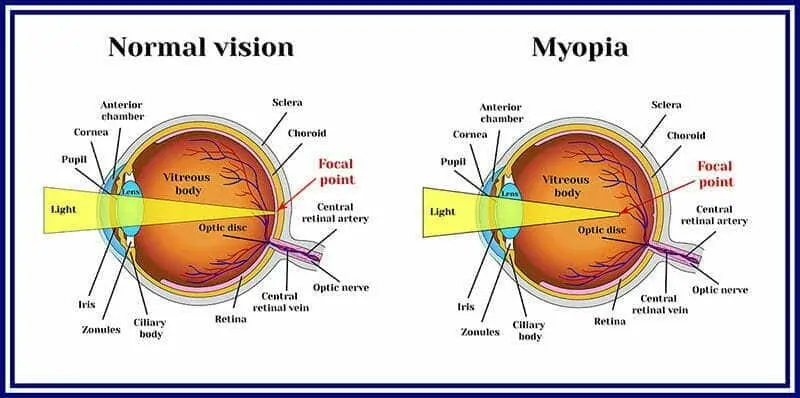Myopia
Nearsightedness, or myopia, affects people of all ages. This common refractive error affects your ability to see distant objects clearly, as it changes the way light enters your eye, causing blurry distance vision. Fortunately, you can manage and correct your myopia with the proper treatment.

Types of Myopia
Different types of myopia are determined based on the severity of the refractive error. Mild myopia is also known as low myopia, whereas severe myopia is referred to as high myopia. Nearsighted children may become even more nearsighted as they age, but typically their eyeglasses should stabilize in their 20s.
Signs and Symptoms of Myopia in Children
Children don’t always notice that they’re having issues with their vision, as they have no reference point. While they may not complain about being nearsighted, signs include struggling to see the whiteboard at school, squinting, being unable to see the TV from far away, experiencing headaches, and eyestrain. Although the exact cause of myopia is unknown, genetics is a known risk factor. If a parent has myopia, their child is at a greater risk of developing myopia. Spending too much time indoors also increases the risk of myopia, while spending more time outdoors in natural light reduces the risk.
Pediatric Myopia Control
An eye doctor can help determine if your child has myopia. Through an eye exam, an optometrist can identify if vision issues need to be corrected. Once your eye doctor has identified the problem, they can advise you on different treatment methods for myopia control.
Risks of Myopia
People with myopia are at a higher risk of developing other eye problems, such as a detached retina, glaucoma, and cataracts. It is essential to visit an optometrist regularly for eye exams to check for these conditions. An optometrist can diagnose myopia by using a phoropter to measure the glasses prescription or a retinoscope in younger patients who cannot read the eye chart.
Treatment for Nearsightedness
Eyeglasses or contact lenses are common ways to correct myopia. Refractive surgery such as LASIK and refractive lens exchange can also correct vision. However, these procedures carry risks of complications and side effects and a person’s age must be taken into consideration when choosing an appropriate treatment.
Let us help you
Schedule your eye care appointment today and experience the difference of personalized, comprehensive eye care.